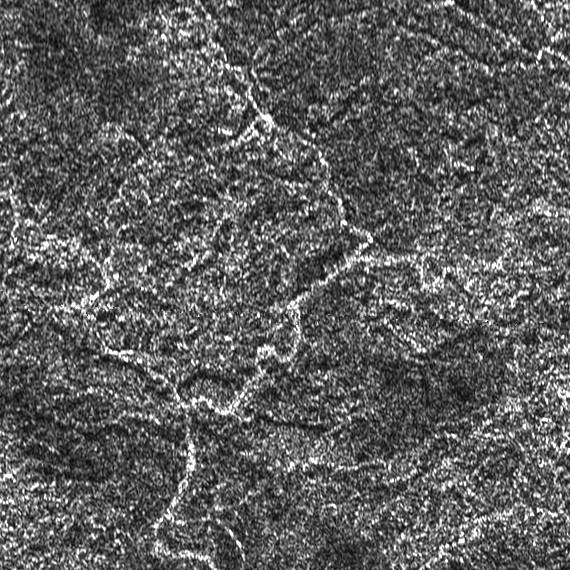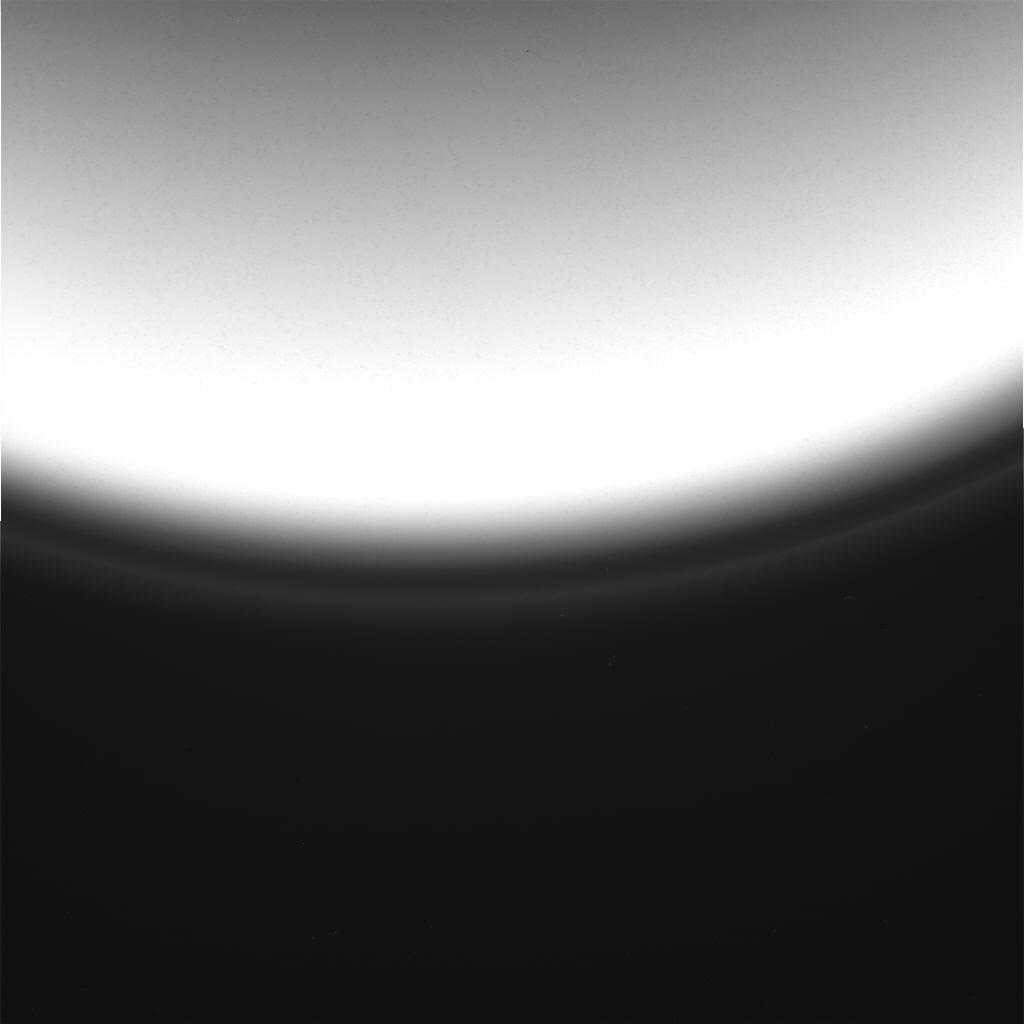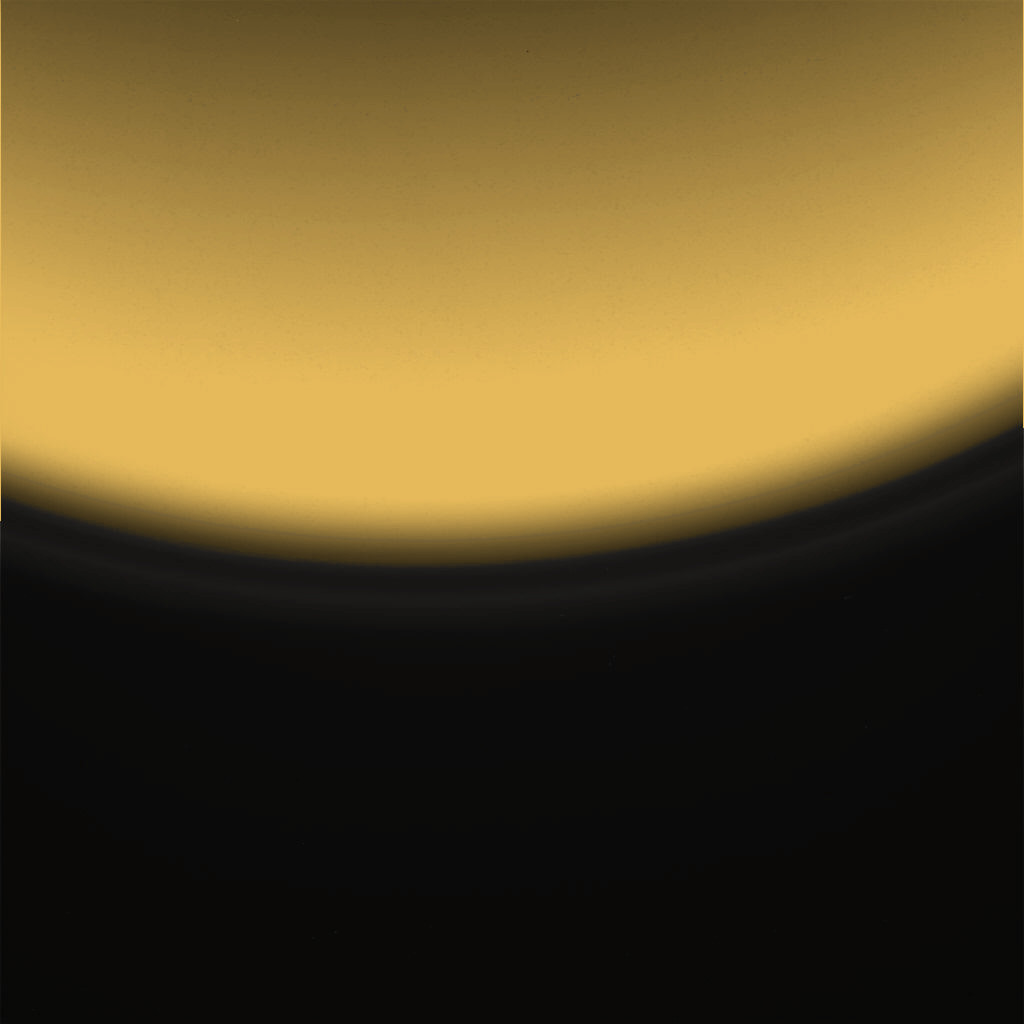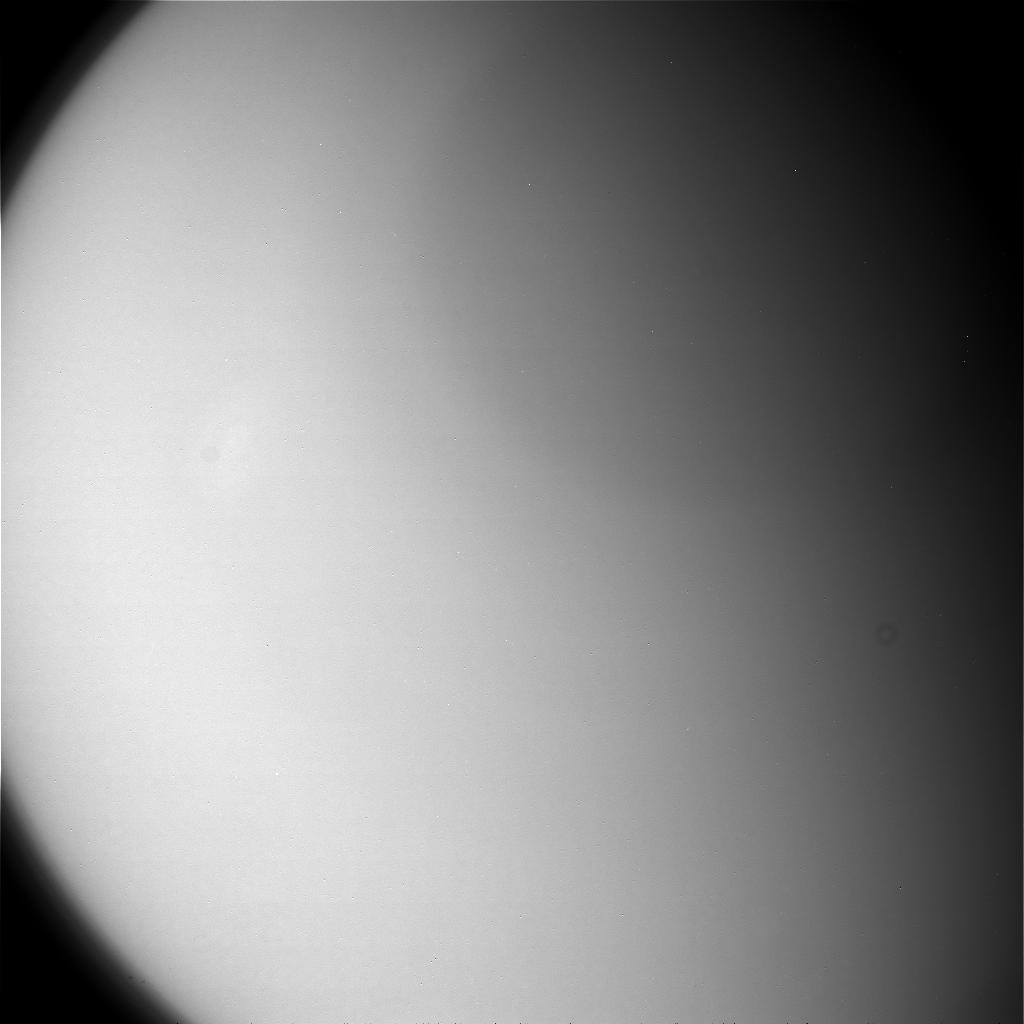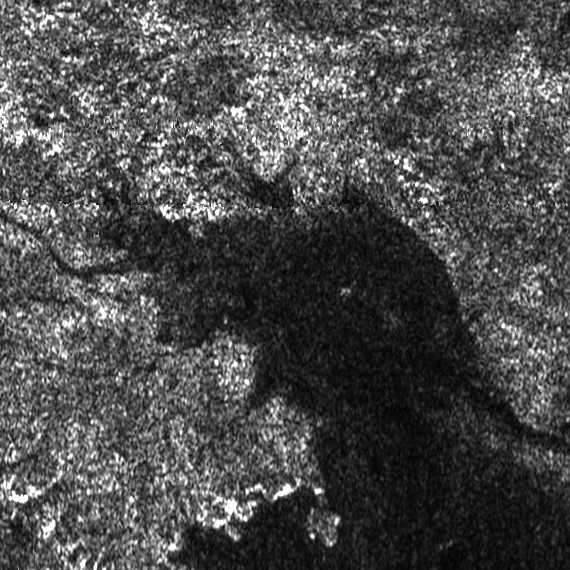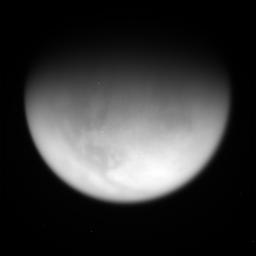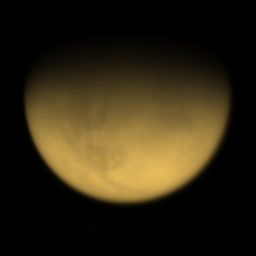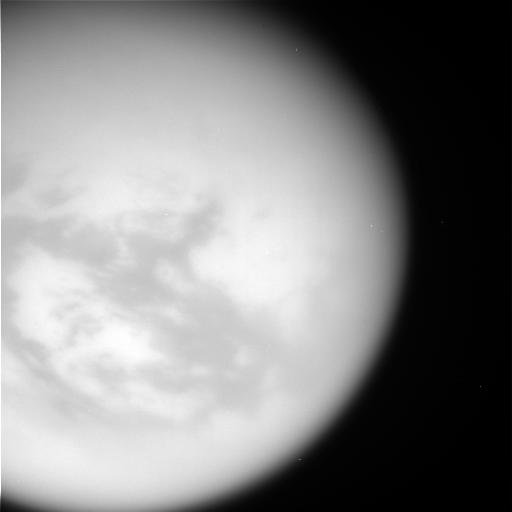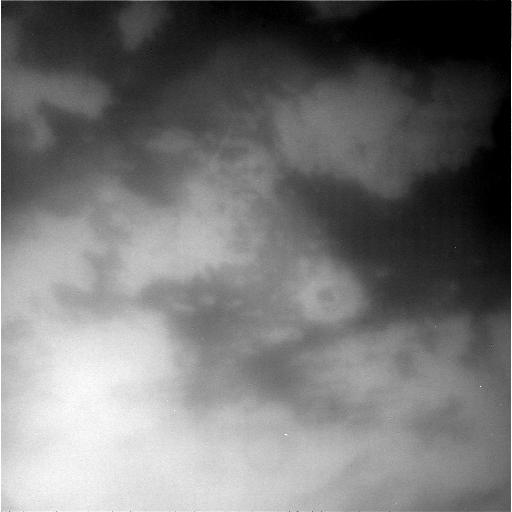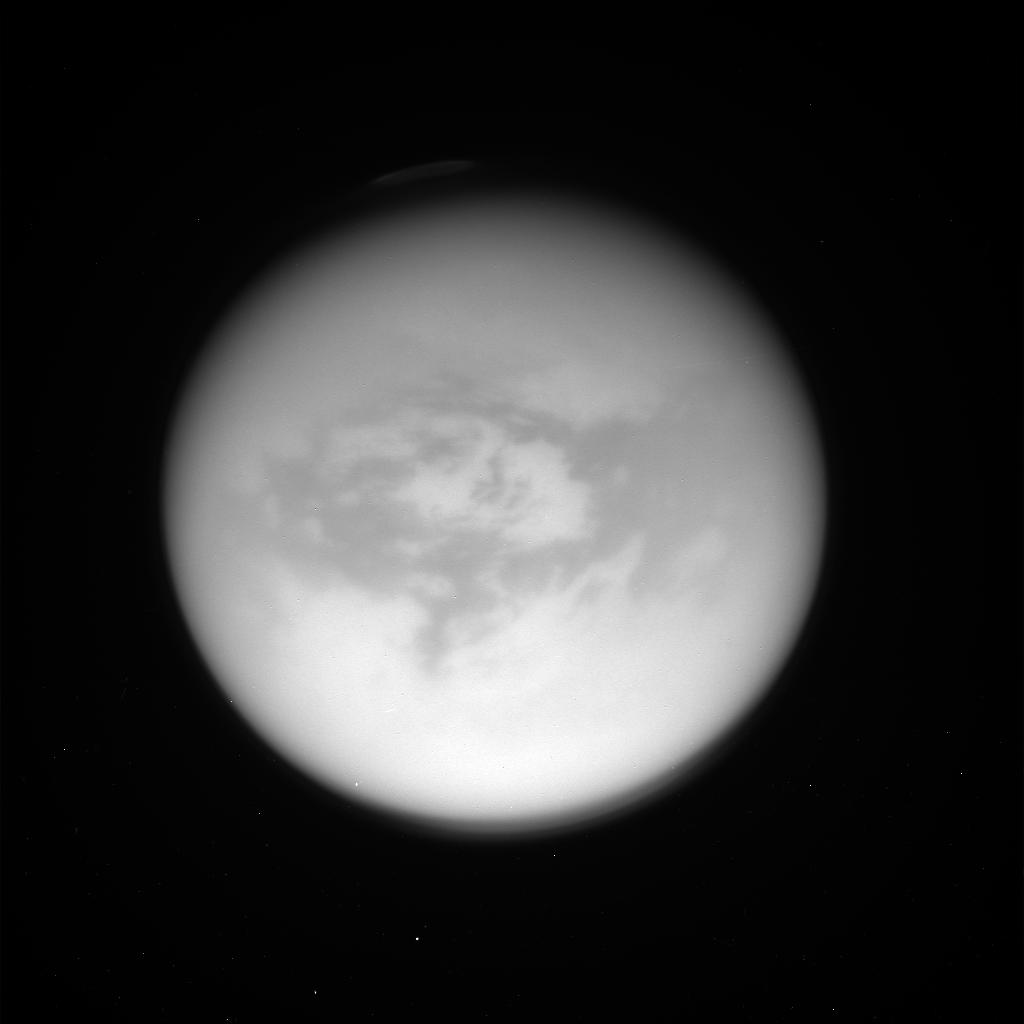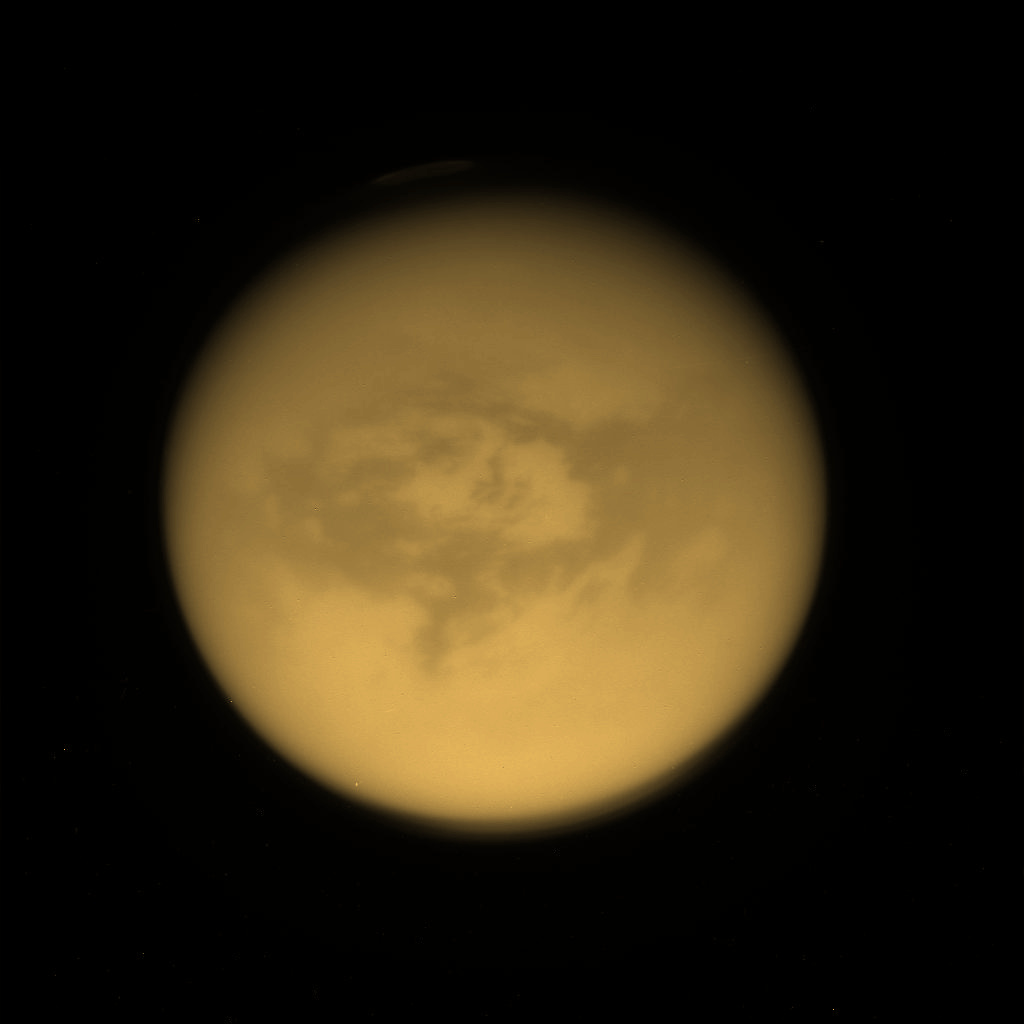Titan News 2023
November 9, 2023: Fractures Or Strike-Slip Faulting In The Exploration Area Of The Dragonfly Rotorcraft ?
Is the external crust of Titan stable or unstable ? Are there fractures in the external crust of the largest moon of Saturn ? That's a major question for planetologists and for exobiologists. An unstable external crust on that intriguing world implies the potential presence of major tectonic events and the potential presence of cryovolcanoes that are likely to spew water, ammonia, hydrocarbons or organics from time to time. A new study entitled "Exploring the initial landing site area of Dragonfly on Titan: Insights into shear failure and strike-slip faulting at Selk crater", proposed by Liliane M.L. Burkhard and Sarah A. Fagents and published in Icarus in the volume 406 evaluates the potential of fracturing of the external crust of the Opaque Moon due to the tidal forces related to the variations in the distance between the Gas Giant Saturn and Titan. The researchers of the study focus their attention on the area where the probe of the Dragonfly mission will land in 2034. The Dragonfly rotorcraft will have the opportunity to explore an area of dunes as well as the area of the Selk crater. Will it identify fractures, shear failure or strike-slip faulting during that ambitious mission in the harsh environment of that intriguing moon ?
Thanks to the Radar Mapper of the Cassini spacecraft in particular, we have been in a position to identify remarkable features on the surface of the giant moon of the Ringed Planet. There is a sharp contrast between relatively bright areas and relatively dark areas in the low or middle latitudes. The relatively dark areas found in the low or middle latitudes turn out to be dominated by linear and parallel dunes extending over long distances. The relatively bright areas found in the low or middle latitudes may be richer in water ice or may contain a complex topography with hills, mountains or fractures. The radar views which have been taken from the Cassini orbiter from the start of the Cassini-Huygens mission in the Saturn System in 2004 to the end of the Cassini-Huygens mission in that system in 2017 have clearly revealed that the high latitudes of Titan unveil lakes, seas and rivers. The contrast in the distribution of lakes, seas and rivers on Titan is surprising. How can we explain that the lakes, seas and rivers are mostly found in the high latitudes of the moon ? How can we explain that the north polar region appears to be the most humid area of Titan ? Is that configuration related to tectonic phenomena ?
November 3, 2023: The Potentially Prebiotic Molecule Malononitrile May Form In The Atmosphere Of Titan
The largest moon of the Gas Giant Saturn has the particularity of containing a significant atmosphere that is completely opaque in the visible spectrum from outer space. That atmosphere of Titan is clearly remarkable for several reasons. First, the atmosphere of the giant moon is dominated by molecular nitrogen like the atmosphere of the Earth. The atmosphere of that exotic world, relatively rich in methane, may resemble the atmosphere of the early Earth. The atmosphere of Titan reveals major differences compared to the atmosphere of the Earth since it contains a relatively significant concentration of methane and since oxygen is absent or almost absent in the gas layer of that intriguing world. Planetologists are particularly interested in the chemistry of the global haze of Titan. That enigmatic haze appears to be rich in hydrocarbons and organics. The ultraviolet light from the Sun can interact with the molecules or the particles present in the upper atmosphere of the giant moon to engender new molecules which can be relatively complex. What type of hydrocarbons or organics can the atmosphere of Titan produce ? That's a major question for planetologists and exobiologists in particular !
A new study entitled "Possible Gas-Phase Synthesis of Neutral Malononitrile (C3H2N2) and Isocyanoacetonitrile (NCCH2NC) under the Upper Atmospheric Conditions of Titan", published on September 8, 2023 in American Chemical Society Earth Space Chemistry and proposed by a team involving Juan C. Ramal-Olmedo, CÚsar A. Menor-Salvan, Akira Miyoshi and Ryan C. Fortenberry reveals the potential mechanisms of malononitrile (C3H2N2) formation in the atmosphere of the giant moon of the Ringed Planet. Malononitrile is a highly reactive molecule that may have played a major role in the process that may have led to the emergence and the development of life on Earth. The researchers of the study believe that the atmosphere of the Orange Moon may represent an ideal environment for the formation and the development of that type of molecule. Let's recall that the gas layer contains relatively significant concentrations of molecular nitrogen (N2) and of methane (CH4). Those fundamental molecules can interact under the action of radiations from the Sun to engender more complex molecules such as malononitrile (C3H2N2) and such as isocyanoacetonitrile (NCCH2NC).
October 28, 2023: A Biological Source To The Methane Of Titan ?
On Earth, hydrocarbons like methane, ethane or propane are key molecules driving our economies because they represent energy sources for our cars or for our industries for instance. Those hydrocarbons are closely related to our biosphere because they have been produced by life a long time ago. The exploration process of the various planetary bodies of the Solar System has allowed us to notice that many worlds contain a relatively high concentration of hydrocarbons like methane or ethane. That's the case for the Gas Giants Neptune, Uranus, Saturn and Jupiter and that's also the case for smaller worlds like Pluto or Titan. Most moons are devoid of any significant atmosphere but Titan represents an exception among the multitude of moons encountered in the Solar System. Titan contains a remarkable atmosphere which is completely opaque from outer space. That atmosphere is dominated by molecular nitrogen like the atmosphere of the Earth. However, oxygen is absent or almost absent in the atmosphere of that strange world. Planetologists have been surprised by the relatively high concentration of methane present in the atmosphere of Saturn's largest moon. Methane tends to disappear in the atmosphere in the long run.
How can we explain the relatively high concentration of methane in the atmosphere of Titan ? Is there a methane cycle between the interior of the moon and the atmosphere ? Is the methane of Titan's atmosphere closely related to cryovolcanoes ? Is the methane of the Opaque Moon closely related to a biological system evolving beneath the icy crust for instance ? Many questions can be put forward to account for the particular chemistry of Titan. In the oceans of our planet, one can encounter ecosystems that generate methane. Bacteria or archaea on Earth can produce methane in the absence of sunlight. Could we encounter that type of ecosystem on the giant moon of Saturn ? We can't rule out that hypothesis because Titan may contain a subsurface ocean dominated by liquid water. One can easily imagine extremophiles thriving in that type of subsurface ocean where pressures are high and where environmental temperatures can be relatively high despite the relatively low amount of solar energy received at the level of Saturn or Titan. The study of the abyss of our oceans where volcanoes can be found can allow us to better anticipate what one could encounter at the level of the floor of the presumed susbsurface ocean of Saturn's largest moon.
July 12, 2023: A New Study Reveals A Potential Weak Intensity Of Most Rivers On Titan
A new research work entitled "Reconstructing river flows remotely on Earth, Titan, and Mars", published in the Proceedings of the National Academy of Sciences on July 10, 2023 and proposed by a group involving Samuel P. D. Birch, Gary Parker, Paul Corlies and J. Taylor Perron reveals that the intensity of most rivers on Titan may be relatively weak. The radar views obtained from the Cassini orbiter during its long mission in the Saturn System from 2004 to 2017 have clearly shown a multitude of lakes, seas or rivers in the high latitudes of each hemisphere on Titan. Curiously, the researchers observe that there is apparently a lack of fan-shaped deltas at the mouths or at the connections of most rivers on the Opaque Moon. How can we interpret that configuration ? Is the flow of those particular rivers relatively weak ? Is the concentration of sediments in the liquid relatively limited ? The lakes, seas and rivers of that world orbiting around the Gas Giant Saturn must be dominated by methane or ethane and must also contain dissolved nitrogen. Therefore, that composition has nothing to do with the composition of the lakes, seas, rivers or oceans on Earth. We know very well the erosional processes associated with liquid water but our knowledge regarding the erosional processes associated with liquid methane or liquid ethane is obviously limited.
The researchers of the study focused their attention on three worlds of the Solar System that may contain lakes, seas or rivers or that may have contained lakes, seas or rivers. The list is small ! The Red Planet Mars is part of those worlds that have contained lakes, seas or rivers a long time ago. Currently, the Earth and Titan are the only worlds of the Solar System that contain stable pools of liquid on their surface. The drainage channels of Mars are completely dry today. The topography of that dry world can tell us a lot regarding its past. The team of geologists at MIT developed a new technique to determine how intensely rivers used to flow on the Red Planet and how strong the flow of most rivers is on Saturn's largest moon Titan at the present time. The method mobilizes satellite data to evaluate the rate at which rivers move the liquid and the potential sediments downstream. The geologists were in a position to calculate how fast and deep rivers were in some areas of Mars more than one billion years ago. They also managed to evaluate how fast and deep active rivers are on Titan today even if the quality of the data they have at their disposal regarding the topography of Titan is much more limited than the quality of the data they have at their disposal regarding the topography of Mars.
June 24, 2023: Titan Is A World Of Mysteries That May Answer Some Fundamental Questions
Titan is not a common moon due to the presence of a thick atmosphere in particular. The largest moon of the Gas Giant Saturn is not a world dominated by craters like Mercury, our moon the Moon, Ceres, Callisto, Tethys, Dione or Rhea. Titan is in fact a giant moon with an active meteorology. The presence of any atmosphere is closely related to the mass of the celestial body and to the environmental temperature at the level of the celestial body. Titan is relatively big and heavy and it evolves at a relatively high distance from the Sun so that it can hold a significant atmosphere. That's not the case for Mercury or the Moon due to the relatively high level of solar energy reaching them in particular. Ganymede, the largest moon of Jupiter and also the largest moon of the Solar System, is devoid of any significant atmosphere curiously. How can we explain that such a massive celestial body is devoid of any significant atmosphere ? The absence of any significant atmosphere on Ganymede must be related to the relatively limited mass of that world at that orbital distance from the Sun or to the relatively high amount of solar energy reaching the giant moon of the Gas Giant Jupiter.
Most moons in the Solar System are devoid of any significant atmosphere. Titan and Triton, the largest moon of Neptune, contain an atmosphere because they present the right combination of mass and environmental temperature for gases like molecular nitrogen to form an atmosphere above the icy or rocky surface. Titan is much lighter than the Earth but the atmospheric pressure on its surface is about 1.5 time higher than the atmospheric pressure on the surface of the Earth at sea level. That seems paradoxical at first sight but the level of solar energy at the level of Titan is so low that gases like molecular nitrogen, methane or argon can remain in the environment of Titan to form a significant atmosphere. Titan looks like the Earth to a certain extent because its atmosphere is dominated by molecular nitrogen which is also the case for the atmosphere of the Blue Planet. Planetologists believe that the Titanian atmosphere looks like the atmosphere of the Early Earth before life emerged and developed. Can molecular nitrogen, methane and the global haze rich in hydrocarbons and organics on Titan interact to engender complex organics or a prebiotic chemistry ?
May 10, 2023: Star Occultations Involving Titan Can Tell Us A Lot Regarding Wind Patterns On That Moon
During the mission of the Cassini spacecraft and of the Huygens probe in the Saturn System, researchers have gathered a huge amount of data regarding the atmosphere, the climate or the meteorology of Titan. The end of the Huygens mission in the atmosphere and on the surface of Titan occurred on January 14, 2005 whereas the end of the mission of the Cassini orbiter occurred on September 15, 2017 with the crash of the Cassini probe into the atmosphere of the Ringed Planet Saturn. Now, we can continue to study Saturn or Titan via telescopes on Earth or via telescopes located in space like the Hubble Space Telescope or the James Webb Space Telescope. The atmosphere of Saturn's largest moon is of particular interest because it looks like the atmosphere of the Earth to a certain extent and because it can tell us a lot regarding our own atmosphere. Like on Earth, winds on Titan can engender large dune fields. A parallel can be drawn between the meteorological cycle of Titan and the meteorological cycle of the Earth. Let's note however that the meteorological cycle of Titan involves methane whereas the meteorological cycle of the Earth involves water. In the harsh environment of Titan, methane and ethane molecules can form lakes or seas !
The Cassini-Huygens mission in the Saturn System has allowed us to determine that the landscape of Titan can be reminiscent of the landscape on Earth. There are lakes, seas, rivers, large dune fields, mountains or fractured landscapes on Titan. Cloud systems can be regularly found in the high latitudes of each hemisphere on the Opaque Moon. Those clouds are not composed of water ice or water vapor like in the atmosphere of the Earth. Those clouds will tend to be dominated by methane or ethane. Planetologists have the opportunity to study another type of meteorological system and to better understand our own atmosphere thanks to the study of the Titanian atmosphere. The atmosphere of the giant moon appears completely opaque in the visible spectrum from outer space. That's not the case in the infrared or near-infrared spectrum which allows to discern surface features or cloud systems. Since the end of the Cassini-Huygens mission in the Saturn System, planetologists continue to study Titan thanks to data acquired from the level of the orbit of the Earth via star occultations or via Doppler wind measurements for instance. Thanks to the data gathered by our telescopes, astronomers or researchers can analyze the dynamics or the chemistry of Titan.
February 23, 2023: A New Study Reveals That The Liquid Motion In The Presumed Subsurface Ocean Of Titan Is Influenced By The Deformation Of The Ice Shell
A new research work entitled "A numerical study of the liquid motion in Titan's subsurface ocean", published in Icarus in the volume 388 of December 2022 and proposed by a team involving David Vincent reveals the influence of the tidal forces and of the deformation of the external crust upon the dynamics of the presumed subsurface ocean likely dominated by liquid water on Titan. The largest moon of the Gas Giant Saturn is part of those worlds of the Solar System that may contain a subsurface ocean rich in liquid water. The small and bright moon Enceladus unveils geysers or eruptions revealing water ice and organics in its south polar region suggesting the presence of a subsurface ocean beneath the external crust dominated by water ice. The other major moons of Saturn tend to contain significant amounts of water ice. That's the case for Tethys, Dione or Rhea in particular. Those moons must contain a liquid layer beneath the external crust. That's also the case for other moons or worlds in the Solar System. Europa and Ganymede, two major moons of Jupiter, may contain a subsurface ocean dominated by liquid water. Triton or Charon, for instance, may also contain a subsurface ocean.
The dynamics of the ocean on Earth is influenced by the atmosphere, by tectonics, by volcanism, by solar radiations or by tidal phenomena related to the Moon in particular. On worlds where the ocean is found beneath the external crust, the logic is different. Tidal forces will tend to deform the external crust and the deformation will tend to influence the dynamics of the internal ocean. Researchers must resort to simulations or models in order to anticipate the potential dynamics of the internal ocean. The currents will be influenced by various phenomena such as the tidal forcing, the deformation of the external crust dominated by water ice and the temperature gradient related to the surface and bottom heat fluxes. Planetologists can simulate the flow engendered by the tidal forces and by the deformation of the external icy crust on the basis of a 2D depth-averaged model. The temperature gradient related to the surface and bottom heat fluxes produces horizontal and vertical density variations whose effects can only be evaluated by a 3D baroclinic model. Does the core radiate energy ? How is the energy from the Sun diffused toward the presumed internal ocean ? Many factors or parameters must be considered.
February 4, 2023: An Ancient Titan Composed Of Hydrocarbon Oceans And Continents Simulated By A Global Climate Model
A new study entitled "Paleoclimate of Titan with hydrocarbon oceans and continents simulated by a global climate model", proposed by Tetsuya Tokano and published in Icarus in the volume 389 on January 1st, 2023 unveils simulations upon the climate of a potential ancient Titan composed of oceans of hydrocarbons and composed of continents. The paleoclimate of Titan simulated by the planetologist Tetsuya Tokano represents a potential climate of Saturn's largest moon one gigayear ago that is to say one billion years ago. Titan may have contained oceans of hydrocarbons as well as continents at that time. Several configurations are envisaged in the simulations of the ancient climate of Titan. The composition of the ocean can be dominated by methane or the composition of the ocean can be dominated by ethane. The simulations produced via a global climate model with a slab ocean model take into account the composition of the ocean as well as the potential presence of continents or the potential absence of any continent. The key molecules of the potential ancient oceans appear to be methane (CH4) and ethane (C2H6).
Today, the climate of Titan is really harsh due to the relatively low level of energy received from the Sun. The environmental temperature of Titan at the level of the surface is around -179 degrees Celsius, -290 degrees Fahrenheit or 94 Kelvin so that methane, ethane or even propane can appear in their liquid form on the surface. The atmosphere of Titan is currently dominated by molecular nitrogen like our own atmosphere but the second most abundant gas of the atmosphere is not oxygen on Titan. The second most abundant gas of the atmosphere of the giant moon is in fact methane. Methane can form lakes, rivers or seas on Titan. That's also the case for ethane, a molecule that is heavier than methane. The climate of Titan will be intimately linked to the size of the oceans or seas and to the composition of the oceans or seas. What will the climate be if the ocean is dominated by methane ? What will the climate be if the ocean is dominated by ethane ? The study of Tetsuya Tokano reveals that the climate over oceans rich in ethane is dry in terms of methane. The study also suggests that the climate over oceans rich in ethane is windier than the climate over oceans rich in methane.
Titan News 2022
Titan News 2021
Titan News 2020
Titan News 2019
Titan News 2018
Titan News 2017
Titan News 2016
Titan News 2015
Titan News 2014
Titan News 2013
Titan News 2012
Titan News 2011
Titan News 2010
Titan News 2009
Titan News 2008
Titan News 2007
Titan News 2006
Titan News 2004, 2005
Back to Main Page
